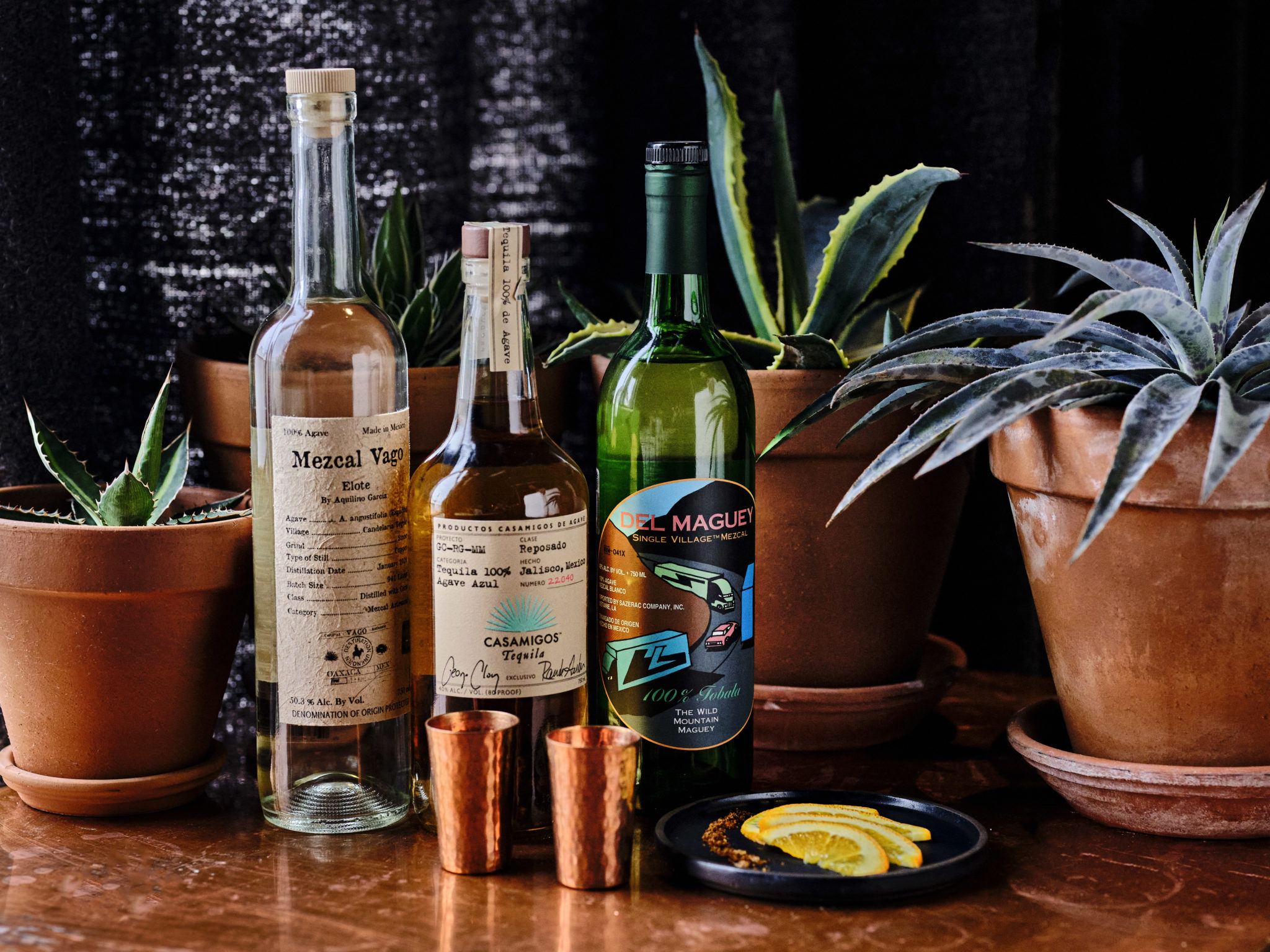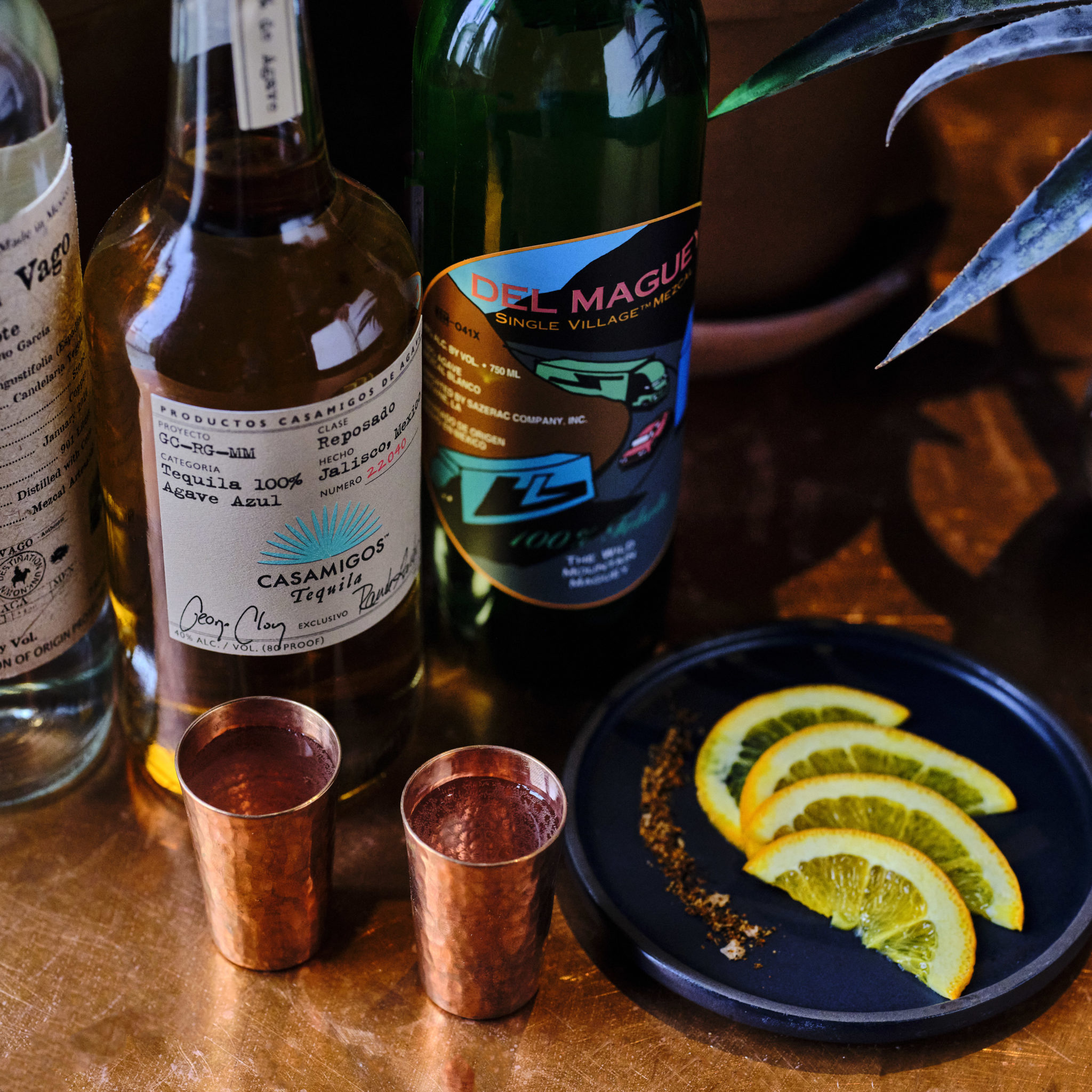Spirits of agave: Everything you need to know about tequila and mezcal

There’s a popular adage in the beverage world: What grows together goes together.
It’s the idea that food from a certain part of the world tends to taste better with beverages from that same part of the world. This is especially true in places with deep cultural roots, where traditions of eating and drinking have evolved together, often in complementary ways.
When it comes to Mexican cuisine, especially the regional variety from the state of Jalisco that typifies so much of the Detroit area’s offerings, an ice-cold cerveza is an easy option. But for a deeper dive into the traditions of Mexican drinking culture, we look to agave-based spirits and their long history in Mexico that speaks to a sense of place.
Here’s everything you need to know about tequila and mezcal.
An ancient tradition
Agave fermentation and distillation is an ancient tradition in Mexico. The size of distilleries ranges from small farm distilleries with motivations to preserve the culture to massive outfits with international reach and grand economic ambitions. The production techniques range from those predating Spanish colonization to today’s advanced distilling technology. The survival of the culture and heritage that small producers try to maintain is important to the complex social history of the people and their sense of place.
What is agave?
Agave, or maguey, is a massive succulent related to the yucca that thrives in the desert. The plant consists of a main body, or piña, surrounded by long spiky leaves that can reach heights of 7 feet. It’s an incredibly versatile plant that can be used to make paper, beverages, needles, and fiber. Archaeological evidence from Pre-Columbian stone pits suggest that there’s been a long-held tradition of roasting the piña for food. (Imagine a grilled artichoke heart, but meatier and richer.)
Over 200 species of agave exist and 50 of those are used to make mezcal. Only the mature plants are used when making spirits — which include mezcal and tequila but also pulque, bacanora, and raicilla — because only aged agave has accumulated the amount of starch necessary to turn into fermentable sugars.
How does agave become a spirit?
Agave is harvested using a long-handled sharp blade called a coa de jima. The coa is used to cut leaves away from the heart. Once it’s stripped of the leaves, the entire heart, which can weigh between 80 and 300 pounds, is removed from the ground. The farmer that harvests the agave is known as a jimador, and must be adept at identifying when the plant is mature or else it will be too bitter or too sweet for a satisfactory spirit.
Because agave takes anywhere from five to 30 years to mature, the terroir is present in the plant in the same way that it is present in wine grapes. Despite its long maturation period, this is a plant that flowers only once in its lifetime. Shortly after a single long stem grows from the center of the plant and flowers, the agave dies. Agave plants used for spirits are not allowed to bloom. Without careful attention, the genetic diversity of the plant could be severely hindered. This is why it’s so important to source your spirits from responsible producers.
To make both mezcal and tequila, the heart of the agave must be cooked, which triggers a chemical process that converts complex carbohydrates into fermentable sugars. The piña’s are cut and then cooked in hornos (traditional brick steam ovens) or autoclaves (large pressurized ovens) to extract the sugars needed for production. The cooking softens the piña, making the extraction of these sugars easier. Once the piñas are cooked, they become soft and are crushed and mixed with water to create the liquid for fermentation.
What’s the difference between tequila and mezcal?
Mezcal is a distilled alcoholic beverage made from agave. Therefore, tequila is technically a type of mezcal, but there are differences in the type of agave and production method.
For starters, the areas where tequila is made are more northern, while much of Mexico’s modern mezcal production is centered in the south, with a majority in an around Oaxaca.
Mezcal can be made from a wide variety of different types of agave, but espadin is most popular. It tends to carry a smoky flavor, while tequila is often sweeter and fruitier.
Tequila is required to use the blue Weber agave, which is native to only certain regions of Mexico. Though not exclusive to the small town of Tequila in Jalisco, blue Weber was so abundant there that the local version of mezcal eventually became eponymous. Today, to bear the name “tequila,” the spirit must be created in certain parts of the five Mexican states of Jalisco, Tamaulipas, Guanajuato, Michoacan and Nayarit, though Jalisco remains the main farming and production area.

Understanding different types of tequila
In 1978, the tequila industry initiated a set of strict standards that regulate where and how tequila can be made, what is on the label, the style (or type) of tequila, and what can legally take the name “tequila.” By law, 51 percent of the fermented sugars in tequila must come from the blue agave. A quality tequila will always state the contents on the bottle. It is a legal requirement for all 100% agave tequilas to carry a four-digit Norma Oficial Mexicana (NOM) number that identifies the distillery of origin. When a tequila is not produced from 100% blue agave and it gets its sugar from other sources before distilling, it is known as mixtos.
Highland tequila, which grows over 2,000 meters above sea level, is slower growing, larger, and the agave has more sugar content, resulting in a fruity terroir. Lowland tequila tends to have a more earthy terroir.
Tequila can be aged or unaged. Unaged tequila offers more fruit and terroir characteristics. Aged or matured tequila offers oak aromas, hints of vanilla, and a smoother, mellower flavor. American Standard Barrels, usually oak and sourced from the bourbon industry, are used in most tequila maturation, though French oak, sherry butts and pipones can be used as well.
High-caliber tequila does not have to be aged as long as other spirits like whisky because of Mexico’s proximity to the Equator. The warm climate accelerates the evaporation and aging process, which can make a three-year tequila present roughly the same amount of aging as a decade-old whiskey.
How to read a mezcal or tequila label
Blanco or Plato means there is no minimum age.
Joven or Oro means that the spirit has been softened by abocado (adding additional flavor and/or coloring, not to be confused with “avocado”).
Reposado means “rested” and is aged a minimum of two months in oak. These are good for sipping or mixing, and tend to feature softer, mellower flavors.
Anejo means “aged” and it spends a minimum of one year in oak.
Extra Anejos are aged a minimum of three years in oak vessels less than 600 liters each. The small barrel distinction means that the spirit has more contact with wood, which leads to a darker color and a stronger influence of the oak on the final taste. Recommended for sipping because they are smoother and more complex.
What about the worm?
Worms, scorpions, or any other creature suspended in agave spirits are all a marketing gimmick and have nothing to do with urban legends of luck or potency. However, sipping mezcal while eating paper-thin slices of orange dipped in ‘sal de gusano’ (worm salt), is a very traditional way to enjoy the spirit. The worms, or chinicuil, are the larvae of a moth that burrows into the agave plant. The worms are hand harvested, cleaned, toasted, and ground with salt and chiles to create the sal de gusano. The salt is rich, nutty, earthy, and umami-forward, highlights the complexities of mezcal’s natural flavors.
The spirit of sotol
Never heard of sotol? That’s OK! Chances are, if you aren’t a craft bartender or a frequent traveler to Mexico, you probably haven’t had very many opportunities to encounter it. Desert Spoon, a type of slow-growing flowering shrub, was previously considered a type of agave, but recently its taxonomy changed. There are more than a dozen species of the plant, which are primarily harvested in the wild. Unlike agave, which is killed during the process of creating tequila and mezcal, the root of the Desert Spoon remains and can regrow after harvesting. Sotol’s flavor is grassy and subtle. The spirit also reflects the nuances of the land the plant is sourced from, and because it thrives in a variety of climates, it experiences terroir that ranges from notes of pine and menthol to a mushroomy earthiness and funk. It’s usually enjoyed neat, with a light beer on the side.
— By Jaz’min Weaver




